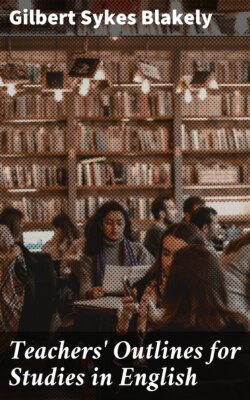Читать книгу Teachers' Outlines for Studies in English - Gilbert Sykes Blakely - Страница 18
На сайте Литреса книга снята с продажи.
II. THE TEACHING OF NARRATIVE POETRY
ОглавлениеTable of Contents
Much has been said, and said with force, about the impossibility of teaching literature. But while many believe that certain kinds of literature can be taught with marked success, they are apt to feel the force of the above contention when they attempt to teach poetry.
It is, of course, comparatively easy to make clear the main idea of a poem, the facts of the plot, the details of the setting, and the characteristics of the actors; but the score of artistic touches that make the poem great cannot be taught, any more than can the beauty of a flower. To be sure, some pupils may appreciate these touches, and appreciate them because of the instruction they receive, but, on the other hand, others never will in spite of all aid and encouragement. It should not for a moment be forgotten, however, that the matters that can be taught are by no means inconsiderable. The language must often be explained; the thought, buried in involved sentences, must be simplified; and the unfamiliar or abstract ideas must be illuminated by illustration. There are doubtless some ideas in poetry that cannot be explained in words, but most of the obstacles that pupils meet with may be smoothed away, if only the difficulty is perceived.
The task of the teacher is, first, to put himself and his class into the atmosphere of the poem. Then the events of the narrative, the idea of the lyric, the characteristics of the setting, and the individualities of the various actors must be clearly brought out. Studies must be suggested that will make the pupil read over and think over, again and again, the words of the poet. Lastly, by reading aloud and by devices which may defy analysis, but which will suggest themselves to teachers who, enthusiastic themselves, desire to inspire others, the class must be made to feel the truth and beauty of the poem.
